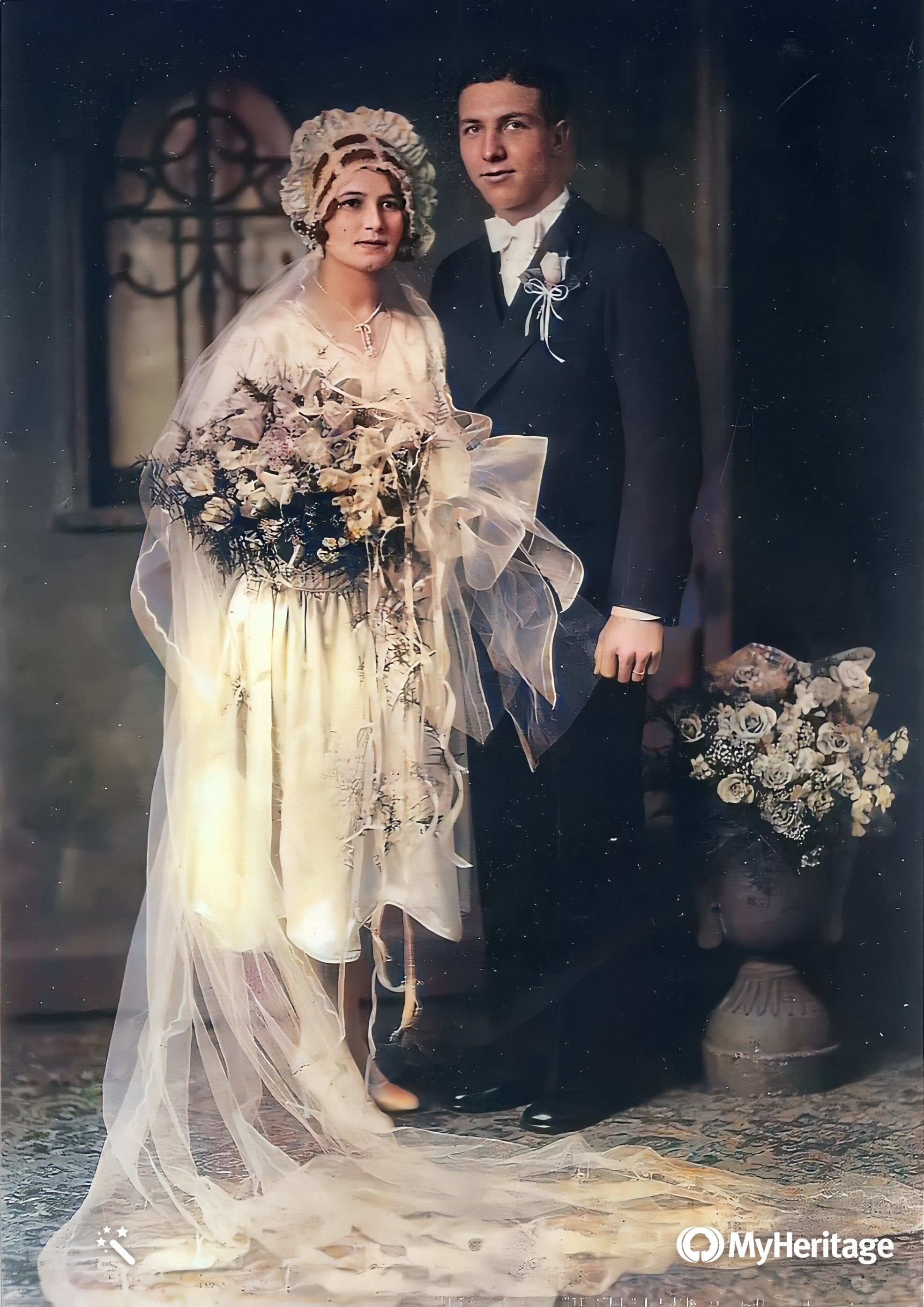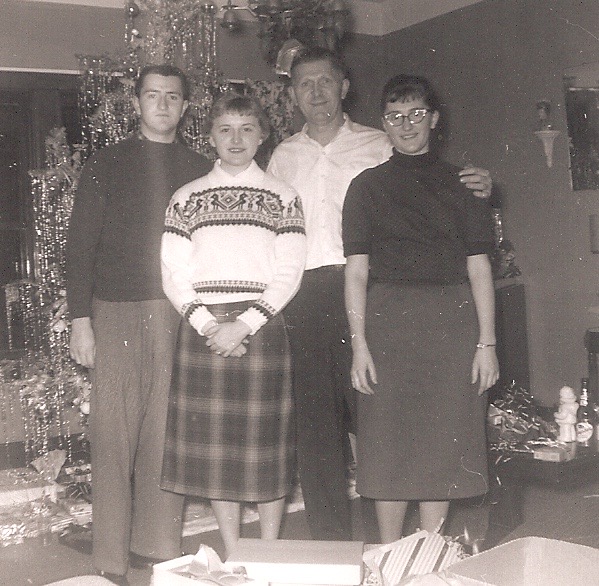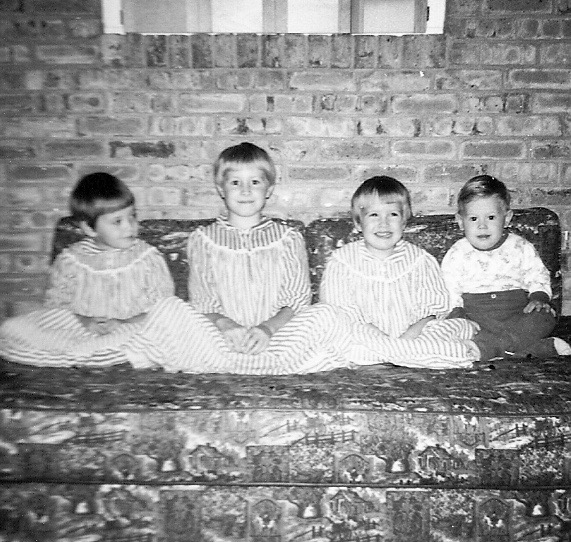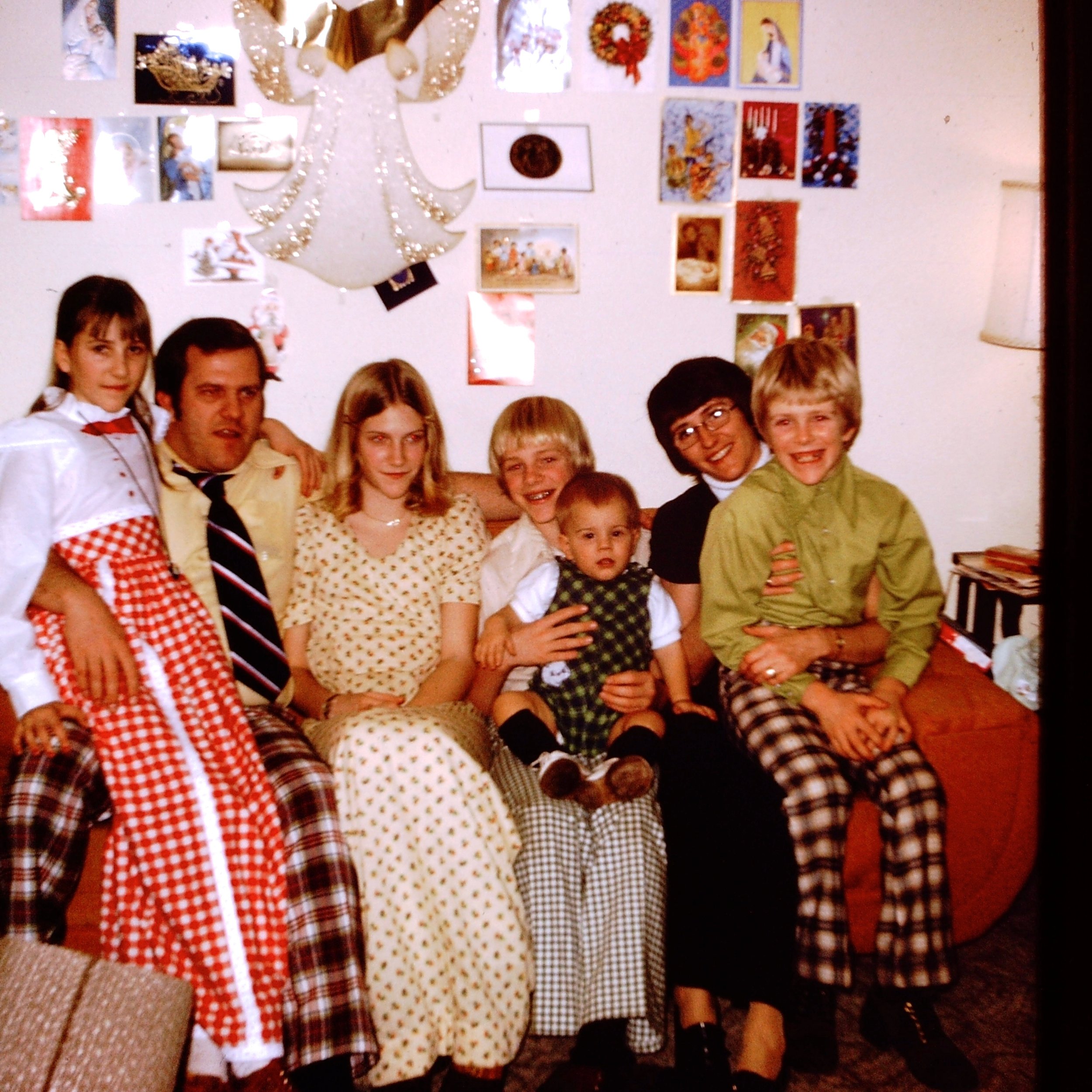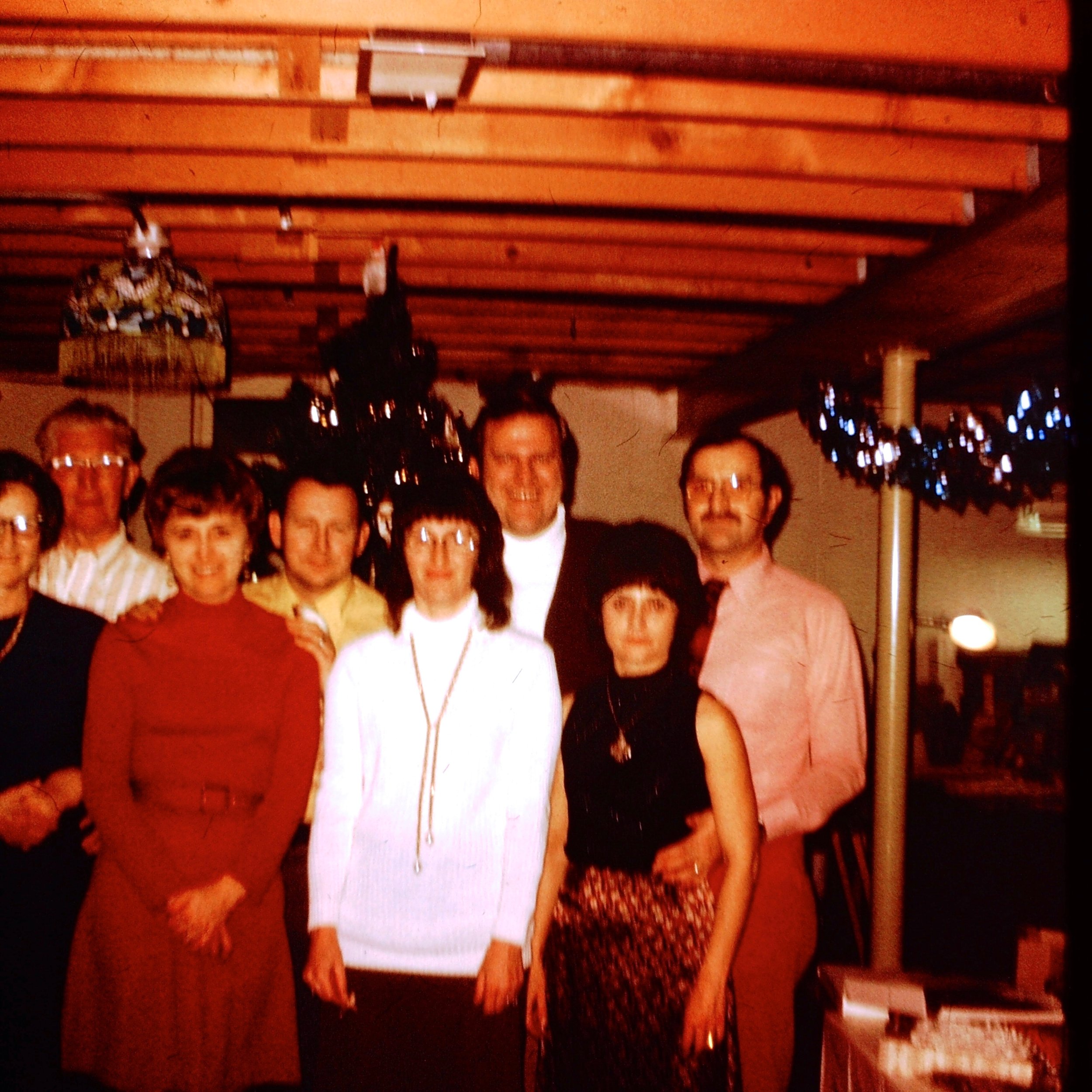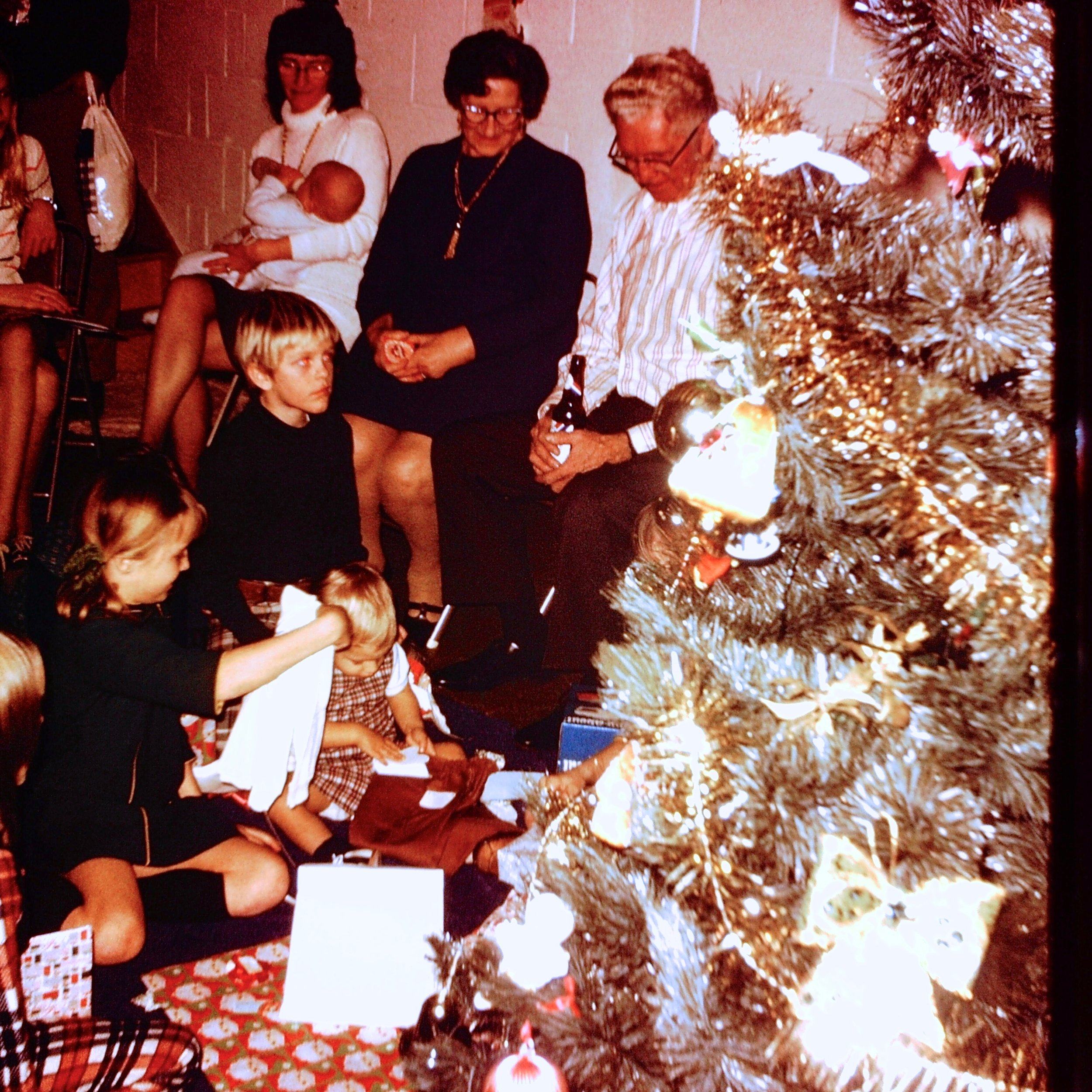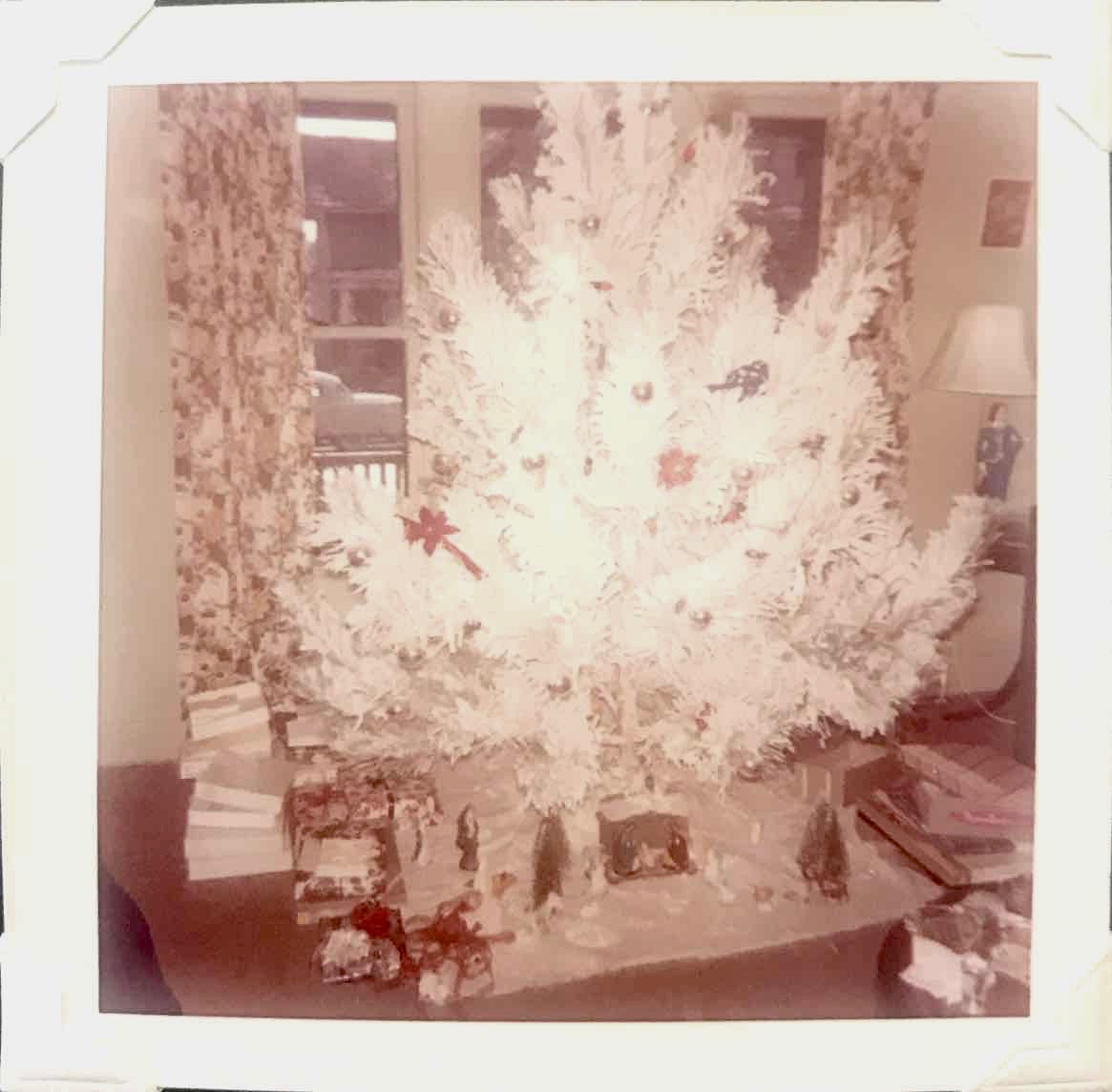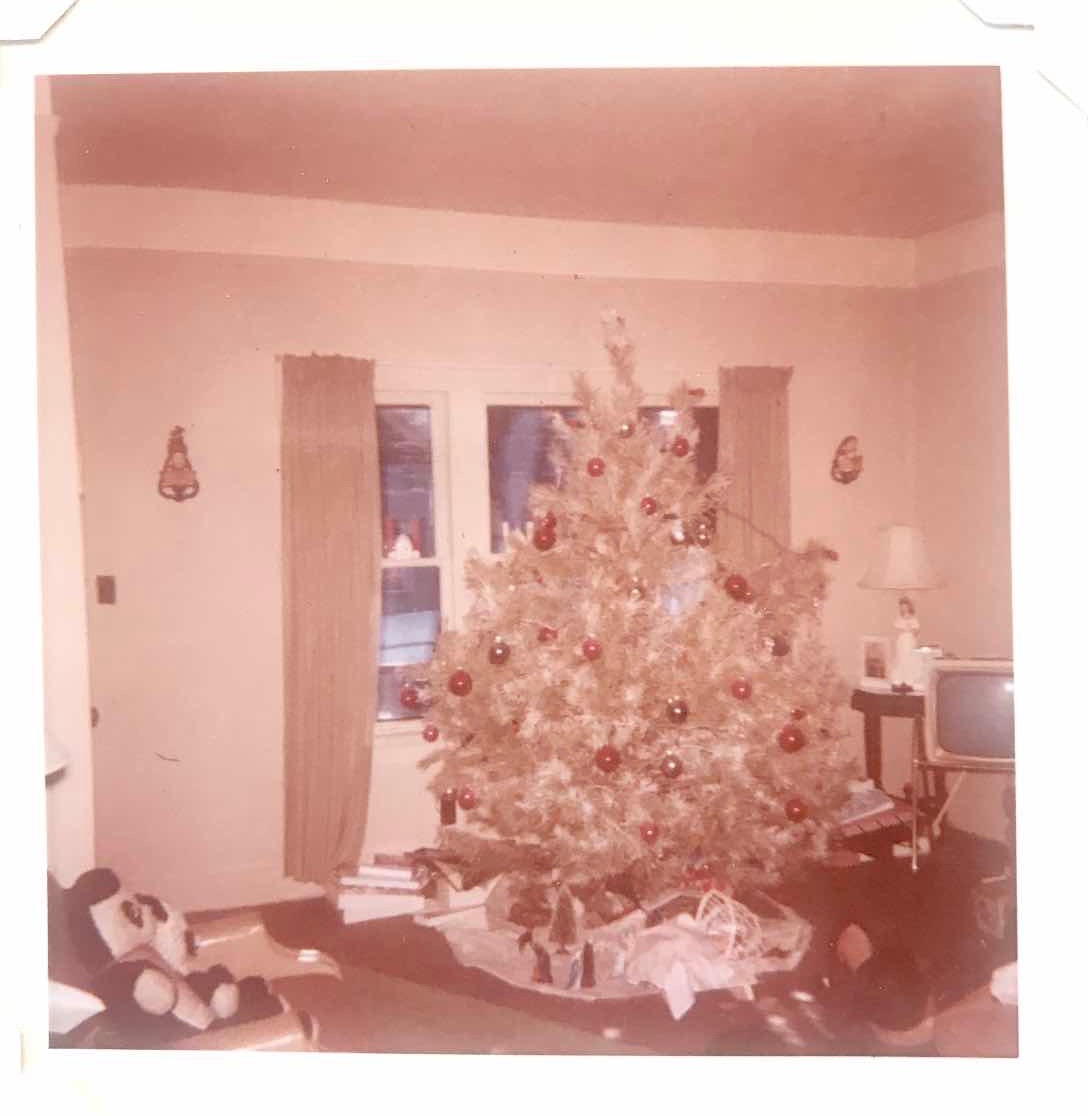Sometimes when researching genealogy I get so engrossed in the deep past I neglect to write about more current events, like my own paternal grandparents, Marie and Harry who were married February 1, 1930 in Racine, Wisconsin. One day while searching Newspapers.com, I came across two enjoyable articles from The Journal Times pertaining to their wedding celebrations; a detailed announce of the ceremony and another of a bridal shower for Marie.
The finer points of the veil and gown are detailed nicely as well as the bouquet. Especially the description of the veil, “caught with orange blossoms”! Of course, after reading this, I immediately pulled out my copy of their wedding photo. My grandparent’s wedding photo is very familiar however it was really hard to visualize the beauty of the grown with a black and white photo. So, I decided to use Ancestry.com’s new photo “colorizing” feature and see what would happen and then cleaned it up a bit on My Heritage’s Photo Enhance Feature as well. Wow, look at the color version of the same photo! It’s surprising to see all the dimension added to Grandma’s gown that can’t be seen in the black and white photo.
I am trying to locate a photo of the wedding party to colorize as well, however after speaking with my Aunt Marlene today she is not sure one exists. How lovely does Hildegard’s dress sound though-“a pale green georgette with uneven hemming, trimmed with green velvet”? In fact, this dress was probably made by my great-grandmother, Elizabeth Thielen Willing, who was a wonderful seamstress.
After reading a wedding shower announcement in the newspaper from January 18, 1930, one would think it was a slow day at the The Journal Times however it was common place to write about such events. In fact, journalists from that era would often push a pencil if a past resident came back to town for a visit.
And I had no idea Bunco was popular in the 1930’s. According to Wikipedia, in the 19th century England, Bunco was “a confidence game similar to three card monte” and since it’s resurgence in 2006 it’s sometimes known as “the housewife’s drinking game”!!!! Sounds like a great evening in honor of my grandmother along with the “midnight luncheon”.
Gosh, this is as close as I will ever come to being at my grandparent’s wedding 92 years ago!!



